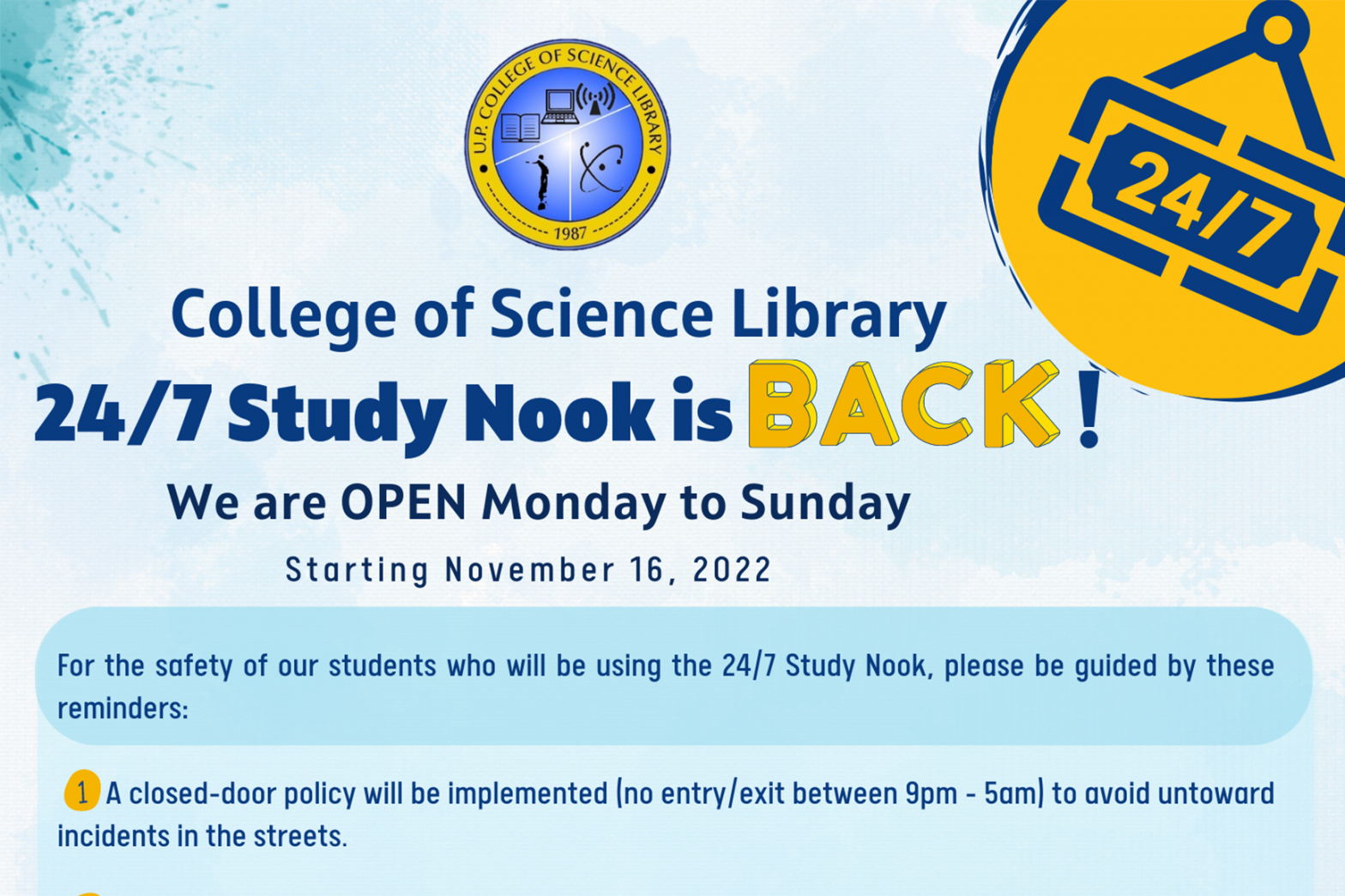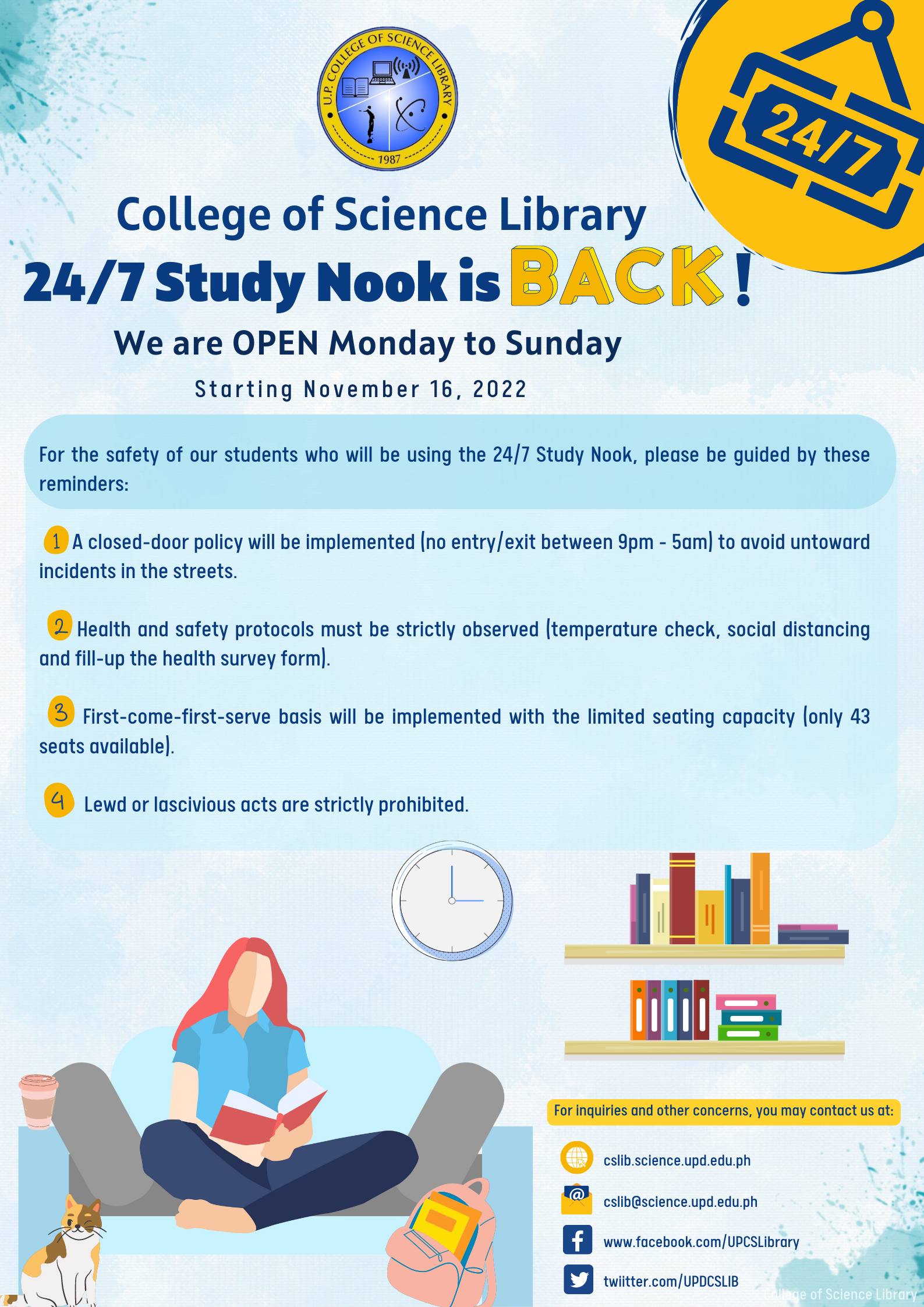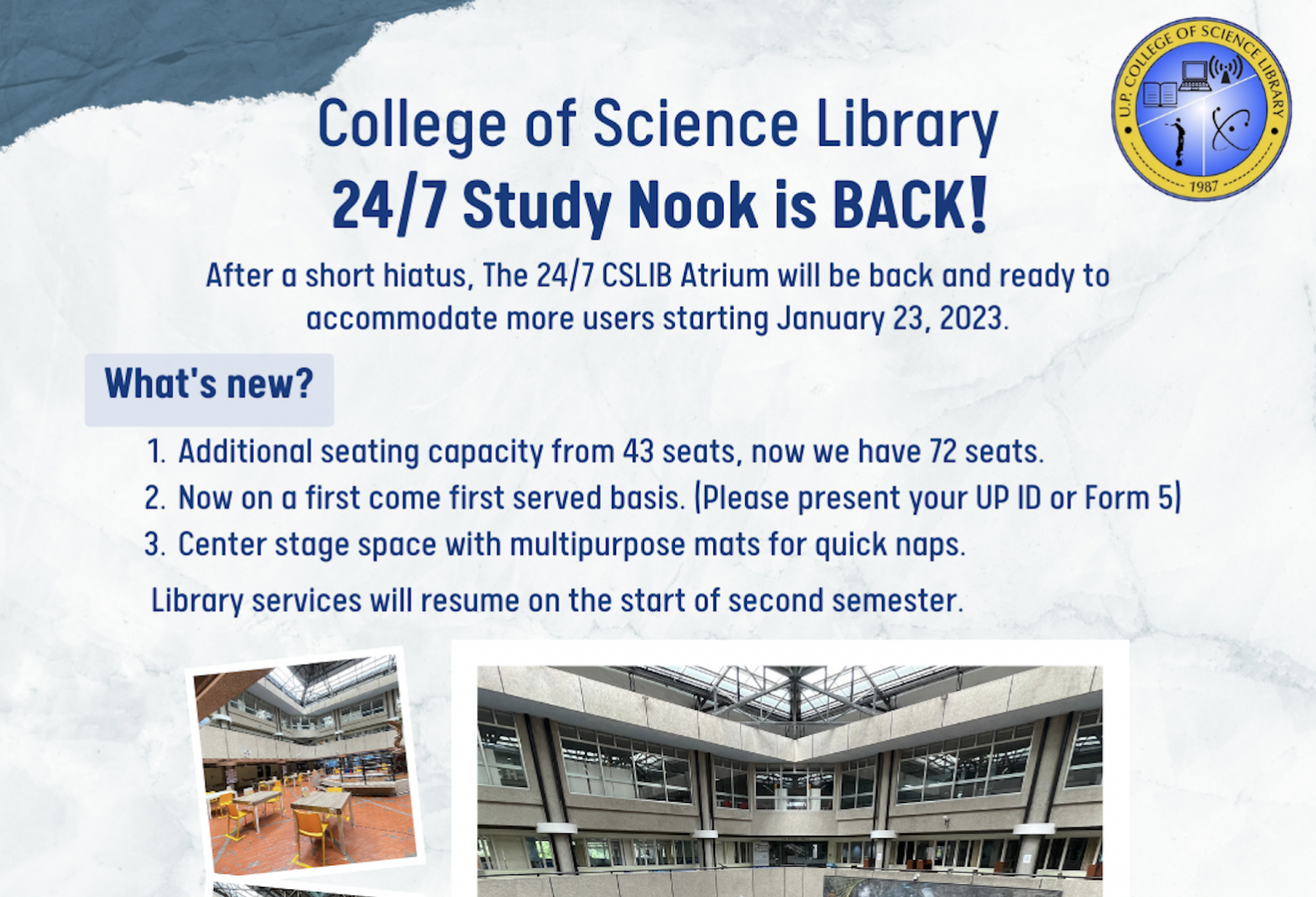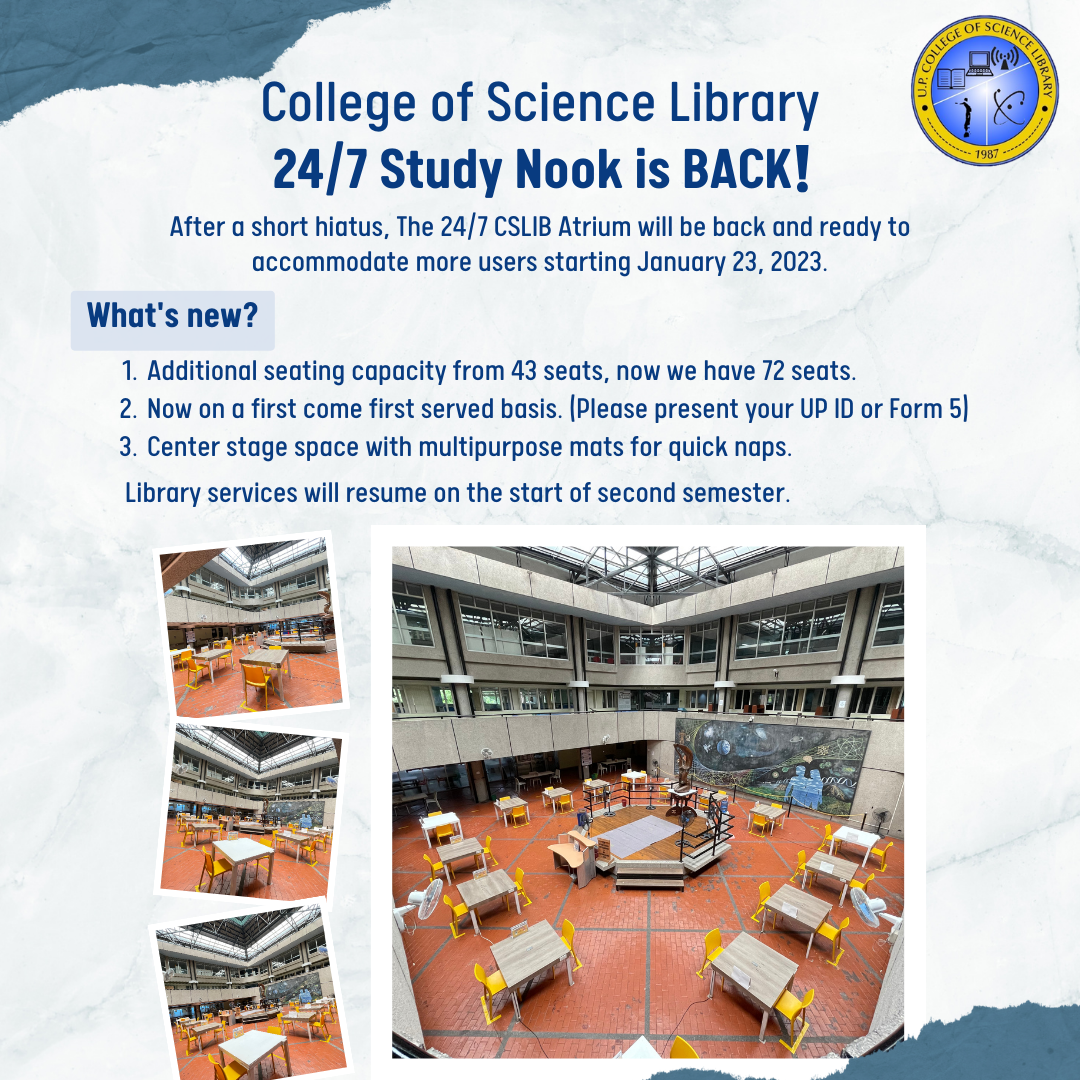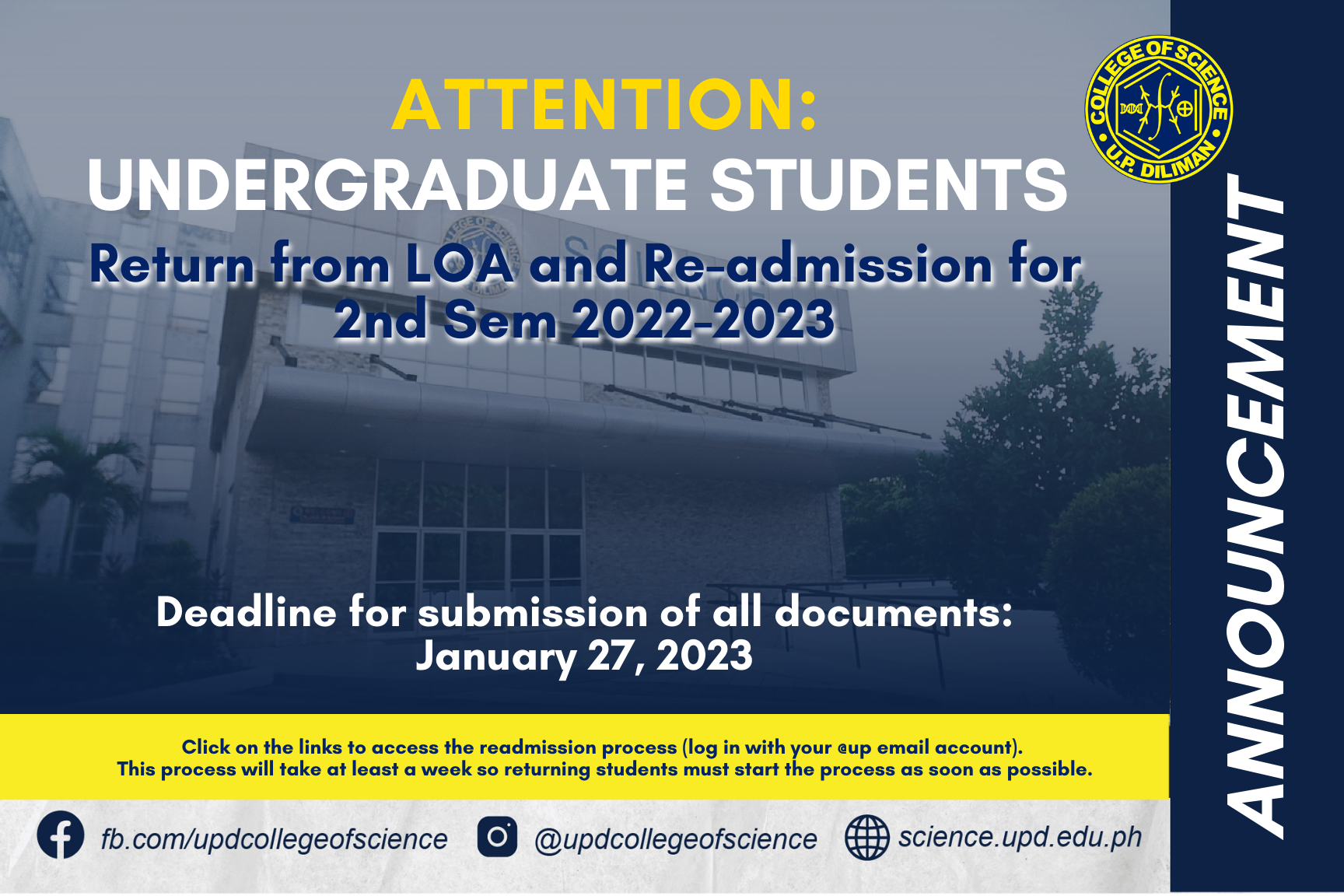Uncertain future looms for Philippine, Southeast Asian mangroves
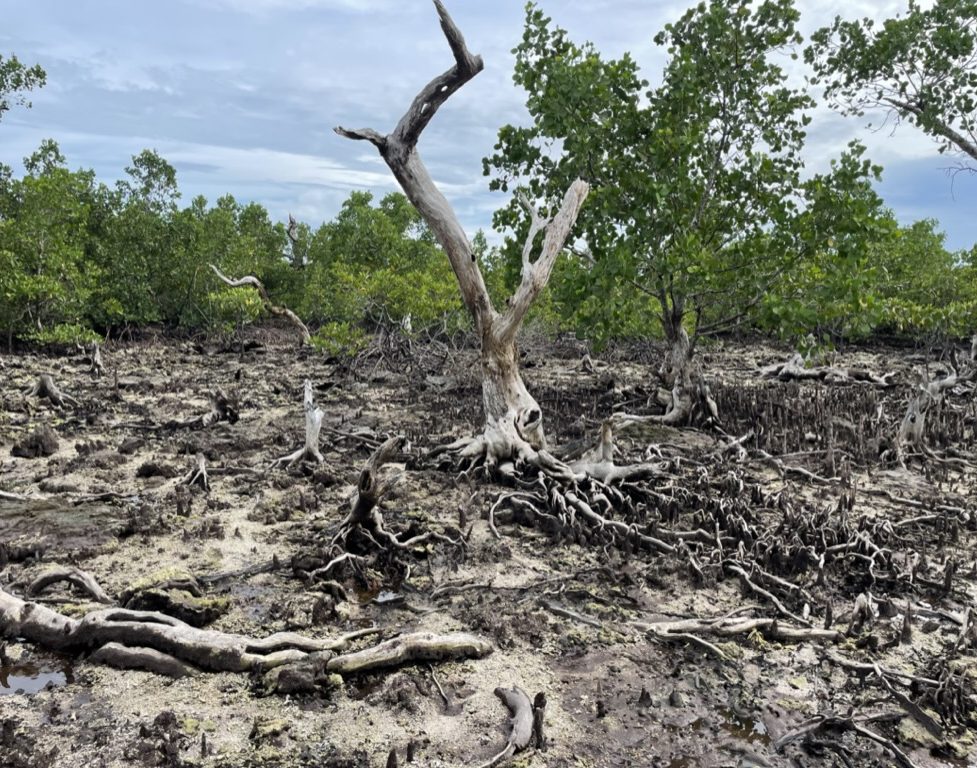
Uncertain future looms for Philippine, Southeast Asian mangroves
Published: January 17, 2023
By: Marie Asheidee M. Masayon and Eunice Jean C. Patron
A comprehensive survey of over 300 mangrove studies across the Philippines and the rest of Southeast Asia (SEA) has found large gaps in our understanding of the current and future state of these already dwindling natural resources, according to scientists from the University of the Philippines – Diliman College of Science (UPD-CS).
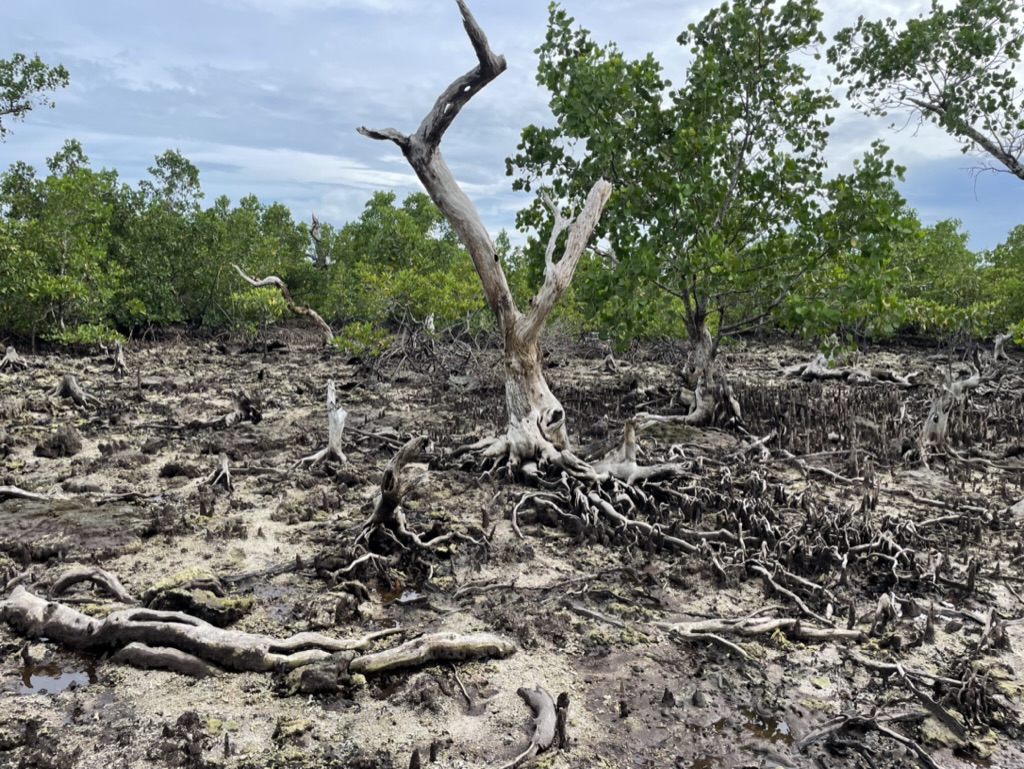
The Philippines is the second worst country in the Association of Southeast Asian Nations (ASEAN) in terms of mangrove losses: it suffered a 10.5% decline between 1990 and 2010, according to independent studies included in the survey. It is surpassed only by Myanmar, which suffered a 27.6% loss between 2000 and 2014.
Less than a decade left
The findings are a stark wake-up call, given the international declaration of the years 2021 to 2030 as the UN Decade on Ecosystem Restoration, aimed at preventing, stopping, and reversing the degradation of ecosystems worldwide. With the countdown well underway, the comprehensive survey undertaken by UP Ph.D. Biology student Maria Elisa Gerona-Daga and Institute of Biology Associate Professor Dr. Severino Salmo III of existing mangrove restoration research helps identify ways to achieve the SEA region’s restoration targets and safeguard their biodiversity.
The pioneering study is the first of its kind in SEA. Entitled “A systematic review of mangrove restoration studies in Southeast Asia: Challenges and opportunities for the United Nation’s Decade on Ecosystem Restoration,” it provides a systematic and quantitative synthesis of 335 mangrove restoration studies in the region that were published before February 2022. The investigation has also identified regional successes and failures in mangrove restorations.
Five priority topics were suggested by Gerona-Daga and Salmo for improving the science and practice of mangrove restoration towards realizing the UN’s targets for 2030: restoration areas and methods; mangrove restoration in climate change adaptation and mitigation programs; monitoring recoveries of biodiversity and ecosystem services; policies, governance, and community engagement; and strengthening of the ASEAN network.

Restoration and climate change adaptation
The researchers propose to add more mangrove faunal and floral species as bases for selecting and prioritizing sites for restoration, thereby furthering the UN’s biodiversity goals and potentially generating useful data on genetic diversity. The approximately 3,000-square-kilometer restorable area across SEA, as estimated by University of Cambridge researchers in 2018, should also be earmarked and ground-truthed for each country to determine suitable restoration sites. Assessing the economic and policy impacts of restoration in places that are also being considered for human settlement and reclamation will help governments create realistic and sustainable plans, Gerona-Daga and Salmo added.
As a region vulnerable to natural disasters such as typhoons and tsunamis, restoration programs should be designed to adapt to and mitigate climate change impacts. Technological innovations for science-based green-gray coastal engineering are critical for facing changing climatic conditions.
The researchers underscored the increasing need for mangroves’ adaptability to climate change. This, in turn, creates the need for new technologies and innovations that can fast-track the sustainable recolonization of mangroves.
Monitoring biodiversity recoveries, ecosystem services
Gerona-Daga and Salmo also point out the problems with data monitoring in mangrove restoration projects, particularly the lack thereof and the tendency of short-term monitoring to misinterpret findings. They also mentioned that while traditional monitoring methods such as transecting and plotting are crucial in assessing biodiversity, institutions should use more efficient and cost-effective monitoring methods such as environmental DNA (eDNA) and remote sensing.
Although vegetation metrics may be easier to measure and reflect mangrove traits that recover faster, the researchers note that correlating these metrics with ecosystem services will be more strategic in quantifying restoration effectiveness. The researchers also advise conducting a comparative assessment of biodiversity and ecosystem services among intact, disturbed, and restored mangroves to shed light on restoration trajectory patterns.
Strengthening government interventions
The study suggests potential government policies to support continued research and community involvement in mangrove monitoring. Southeast Asian collaborations are essential in sustaining regional mangrove protection: establishing and strengthening partnerships with neighboring countries will enable the region to form unified goals and facilitate more sustainable restoration measures. Sharing knowledge and other resources in the SEA region can also benefit countries with limited mangrove restoration research.
To this end, Gerona-Daga and Salmo propose an ASEAN journal focused on mangrove restoration, conservation, and management composed of a multinational scientific editorial board to share mangrove research to a wider platform efficiently and ultimately contribute to effective restoration practices.
“Our study aims to provide suggestions in line with international commitments of ASEAN-member countries,” says Salmo. “The pressing need is to establish and consistently monitor the state of the mangroves for each country, protect mangroves through biodiversity conservation programs, and more importantly, to stop or limit coastal reclamation projects,” he further explains.
Furthering collaboration among mangrove researchers
Gerona-Daga and Salmo expect to conduct another study as a follow-up to their September 2022 publication. They aim to spark deeper collaboration among mangrove researchers all over the region towards sharing recommendations and regular tracking of the progress of mangrove conservation and restoration programs.
The UN Decade on Ecosystem Restoration is a perfect opportunity to underscore the urgency of mangrove restoration. Mangroves provide a long list of ecological and socio-economic benefits, so much so that the International Union for Conservation of Nature (IUCN) refers to them as nature’s superheroes because they not only provide livelihood and habitats to animals but also mitigate climate change and reduce the impacts of storms and other natural disasters.
REFERENCES:
For interviews and further information, please email Maria Elisa B. Gerona-Daga (mbgerona@up.edu.ph) or Dr. Severino G. Salmo III (sgsalmo@up.edu.ph).
For other inquiries, please contact media@science.upd.edu.ph.
Return from LOA and Re-admission for 2nd Sem 2022-2023
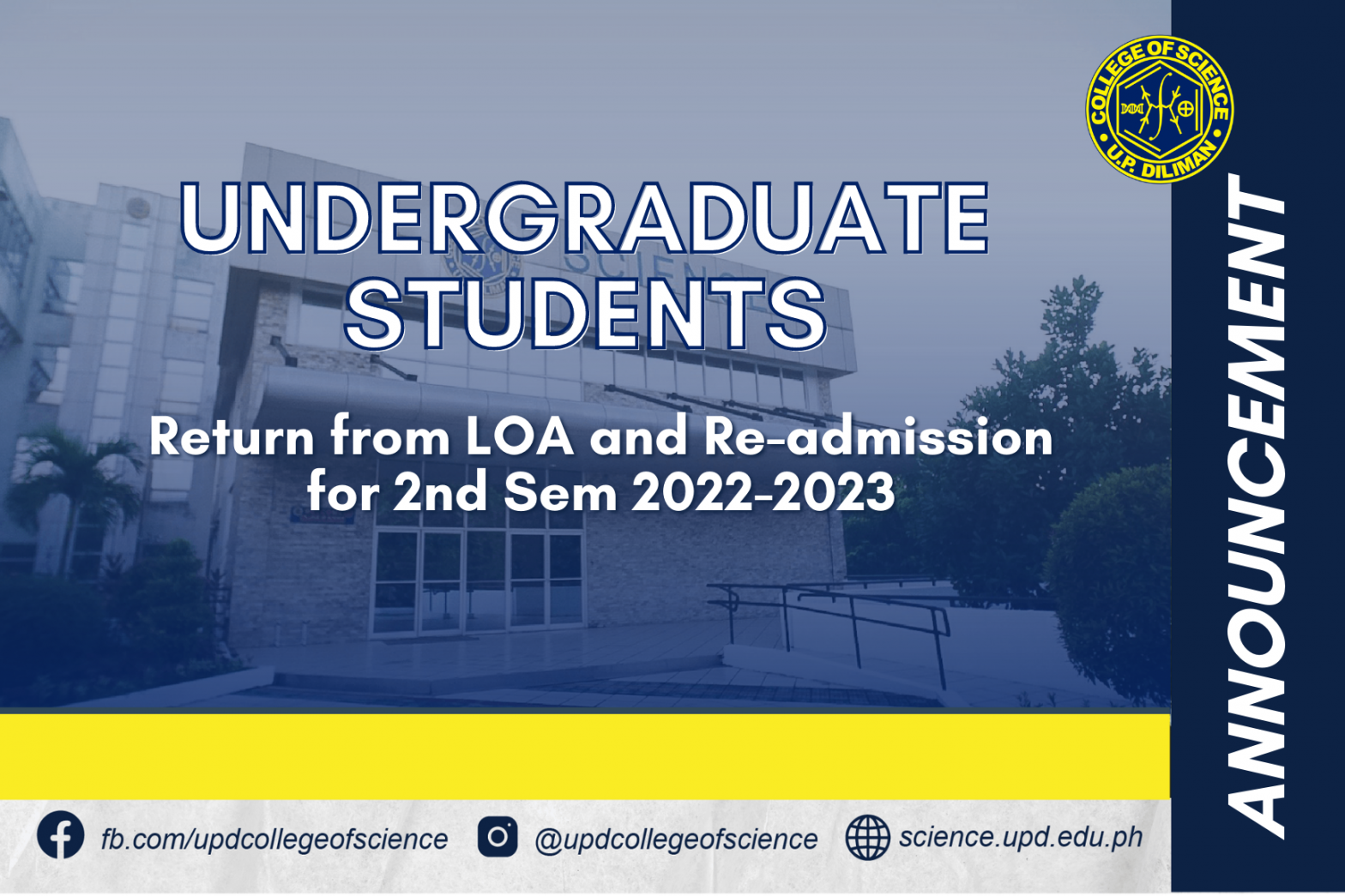
UPD-CS Initiatives Enhance Environmental Monitoring with Automated Technologies
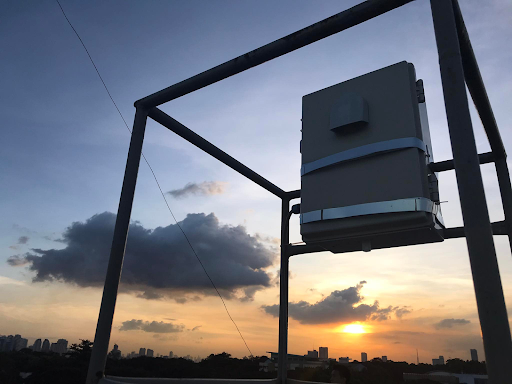
UPD-CS Initiatives Enhance Environmental Monitoring with Automated Technologies
Published: January 17, 2023
By: Eunice Jean C. Patron
Communities across the Philippines could become more environmentally sustainable, thanks to the University of the Philippines – Diliman College of Science (UPD-CS) spearheading the use of automated environmental monitoring technology and regular environmental testing procedures for possible deployment nationwide.

At the behest of UPD Chancellor Fidel Nemenzo, who prioritized the protection and preservation of UPD’s natural environment in his vision for the campus, the UPD-CS led other colleges and institutions in the University in setting up sophisticated sensors for keeping an eye on the environment around the clock. The Chancellor appointed the multi-sectoral Task Force on Environmental Sustainability (TFES) to create environmental action points for a possible model for a green campus, which could then serve as the prototype for green spaces nationwide.
Real-time environmental monitoring
Two key action points determined by the expert team are the deployment in the UPD-CS’ National Science Complex (NSC) of the AirboxSense system for real-time air quality reporting to the general public, and the establishment of an air and water quality monitoring network with the Diliman Environmental Management Office.
The AirboxSense was developed by Innosens Technology SDN BHD which was deployed in UPD-CS through a collaborative project sponsored by ASEAN-India Science,Technology & Innovation Cooperation (AISTIC). The device was purchased by the project funding, which led to effective deployment in the Philippines, Malaysia, and India. The collaboration was between the University of the Philippines, National Institute of Technology Meghalaya and Universiti Kebangsaan Malaysia. The sensor technology is patented under Malaysian intellectual property.
“Air quality monitoring using AirboxSense in the NSC started in August 2022. It’s an initiative between the Philippines, Malaysia, and India to put up these monitoring devices for air quality control,” explained Dr. Mylene Cayetano, a Professor at the UPD-CS’ Institute of Environmental Science and Meteorology, a member of the UPD TFES, and the Philippine Principal Investigator for the AISTIC. The AISTIC project has facilitated valuable knowledge sharing and collecting air pollutants dataset from various geographical locations. This helps to develop efficient AI models to predict the real time air pollutants.
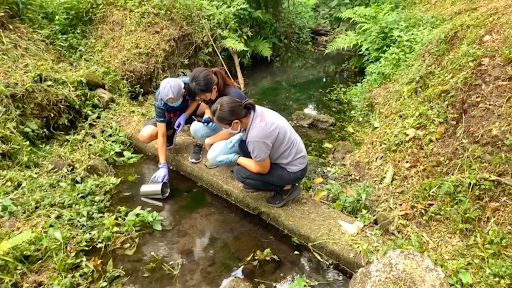
To complement the AirboxSense data, the IESM undertakes regular monitoring of the University’s various creeks and streams: water samples are collected at least once a month and analyzed in the laboratory to assess factors such as the presence of excessive nutrients and suspended solids, irregular pH, and alkalinity, among other parameters.
Towards a solar-powered campus
The UPD-CS also aims to lessen its ecological footprint through solar power installations throughout the NSC. By considering the optimal size and placement of solar panels, Dr. Cayetano and her colleagues were able to determine the best ways to address the campus’ energy needs. Solar panels can save energy for the UPD-CS by lessening the dependency on fossil fuels during the daytime.
“Together with UPD-CS scientists Dr. Lillian Jennifer Rodriguez and Ms. Jelaine Gan, we calculated the area ng lahat ng rooftop ng CS buildings. We determined the surface area of the rooftops facing south. Then we proposed how many solar panels we need to install in CS para hindi na tayo dependent sa fossil fuels, and eventually we will transform into an efficient campus,” said Dr. Cayetano. “UPD-CS Dean Giovanni Tapang presented this idea to Chancellor Fidel, and it aligns with the Chancellor’s initiative to make UPD an environmentally-sustainable campus,” she added.
Deployment beyond UP
Going beyond the confines of the University, the UPD-CS, and the IESM collaborated with the Rotary Club of Makati on a system that reports real-time data on air quality via the Airtoday.ph website. The system was also initially designed to record and display air quality data on other areas outside the UPD, including the Lung Center of the Philippines and EDSA Muñoz.
“Picking up from this initiative, nagkakaroon ng other initiatives pa towards a smart campus and environmental sustainability,” Dr. Cayetano said. She cited the UPD Electrical and Electronics Engineering Institute (EEEI) for helping automate the AirboxSense through the UP Center for Air Research (UP CARE) program. Dr. Cayetano also highlighted the Robust Optical Aerosol Monitor (ROAM) developed by Dr. Len Herald Lim of the Institute of Chemistry, which could be deployed outside UPD in the future.
Aiming for nationwide deployment
Dr. Cayetano believes that these projects are of nationwide significance: the information they gather and the data they record will greatly help organizations and institutions across the country in finding solutions to environmental issues. “These [information and data] will eventually tell the numbers. Nasaan na tayo? Nasaan ‘yung baseline? Ano ‘yung emissions natin noong walang activities dahil sa pandemic? Ano naman ‘yung increase ng emissions noong nagkaroon ng activities such as face-to-face classes and the opening of the UPD campus and offices? By knowing these, we know where to stand. By knowing those numbers, we will know how to manage the impacts on the environment of such activities.”
Through these and other initiatives, UPD’s TFES is spearheading the creation of tailor-fit approaches to environmental challenges that can be implemented outside the campus. Data collected from these initiatives can also be used by local governments and other decision-makers in managing localized environmental activities.
The UPD-CS recognizes the importance of international collaboration in addressing environmental challenges and is committed to working closely with its partners to deploy and develop AI models to predict real time air pollutants via AirboxSense.
For interview requests and more information on UPD-CS’ automation and environmental monitoring initiatives and the TFES, please contact Dr. Mylene Cayetano at mcayetano@iesm.upd.edu.ph
For other inquiries, please contact media@science.upd.edu.ph
Sulong-Agham multilingual children’s book launched at UPD-CS
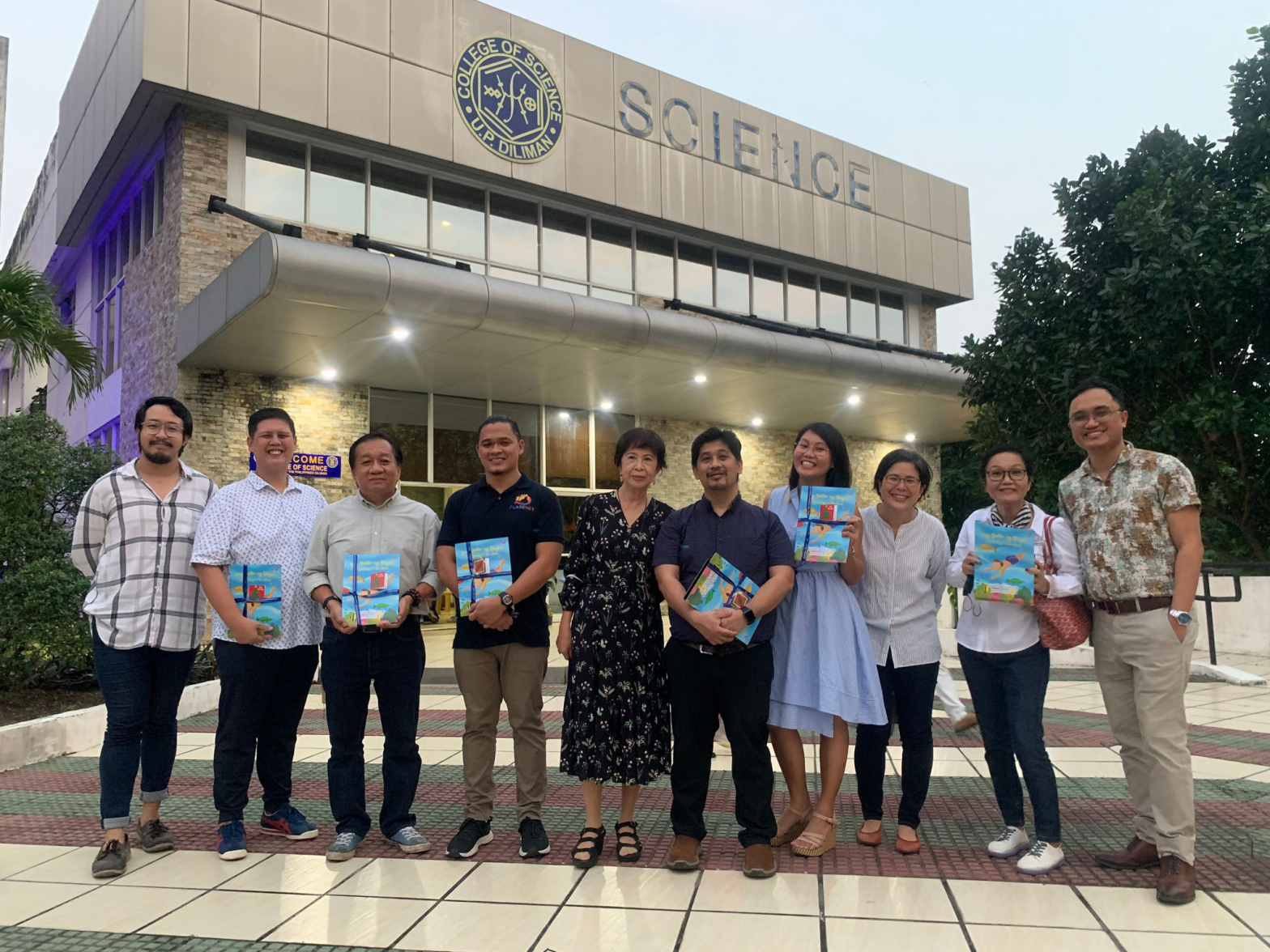
Sulong-Agham multilingual children's books launched at UPD-CS
Published: January 11, 2023
By: Eunice Jean C. Patron
The newly-launched Sulong-Agham series of multilingual children’s books aims to inspire Filipino children to pursue science, technology, engineering, and mathematics (STEM) by showcasing the lives and work of Filipino scientists.

Born out of a collaboration between the UP Diliman College of Science (UPD-CS) and non-profit organization Supling Sining, Inc. (SSI), together with the UP Diliman College of Arts and Letters Departamento ng Filipino at Panitikang Pilipino (UPD-CAL DFPP), Sulong-Agham was successfully launched last December 12 at the UPD-CS Admin Building.
Limited signed copies of the first book in the series, “Ang Doktor ng Dagat,” were given out at the event, which was graced by the author, former UPD-CAL dean and professor emeritus Dr. Rosario Torres-Yu; and the titular subject of the tome, pioneering oceanographer and marine scientist Dr. Deo Florence Onda of the UPD-CS’ Marine Science Institute (MSI). Written in Filipino, Cuyonon, and English, the storybook touches on Dr. Onda’s life and work as the first Filipino and one of the first humans ever to explore Emden Deep in the Philippine Trench — the third deepest place in the world’s oceans.
Following the successful launch of this first volume, Dr. Torres-Yu announced that the next title in the Sulong-Agham series will tackle the life and work of famed Filipino biologist Leonard Co.
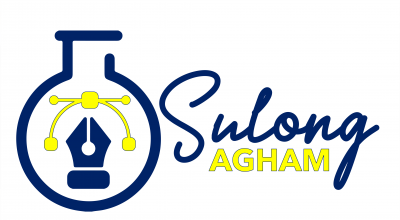
Dr. Torres-Yu also talked about how “Doktor ng Dagat” began as a passion project during the pandemic. It was, for her, a creative spark of hope at a time when it was most needed: “Sa karanasan kong ito, lalong lumakas ang paniniwala ko na ang malikhaing imahinasyon ang naging sagwan ko sa pag-gaod sa dagat ng takot, kawalang pag-asa, at lungkot upang matuklas ko ang misyong lumikha ng mga kuwentong magbubukas sa mga batang Filipino sa mundo ng agham.”
Meanwhile, Dr. Onda fondly recalled how he all but stumbled into becoming a scientist, initially pursuing a biology degree as the first step to fulfilling his parents’ wishes for him to become a medical doctor. However, he quickly discovered that his interests were elsewhere: “Habang nagba-Biology, doon ko narealize na hindi biyolohiya ng tao ang gusto ko. Isang araw, sumulat ako sa mga magulang ko. Sabi ko sa kanila na hindi na ako magmemedisina. Gusto ko na lang ituloy ang pagiging biyolohista, at maging isang marine biologist pagkatapos.”
He also looked back on the thrill of his adventure in Emden Deep. It was a scary once-in-a-lifetime experience that he just couldn’t pass up: “Ilang beses lamang ba nagiging balita ang isang siyentipiko? Ilang beses lamang ba nagiging kuwento sa buong bansa ang kuwento ng isang siyentista? Napakalimitado. Napakakaunting panahon. Napakakaunting oportunidad.”
But Dr. Onda quickly added that the real story at the heart of “Doktor ng Dagat” is much bigger than himself; it’s about the liberation and empowerment that comes from following a dream. “Sinasabi ko po lagi, ‘yung kuwento ng Emden Deep, mas malayo pa siya sa kuwento ko. Kuwento ‘to ng mga batang nangarap, nangangarap, at tinutupad ang mga pangarap nila. Sana ‘yung kuwento ng Doktor ng Dagat ay maging inspirasyon ng mga batang wala masyadong oportunidad sa buhay. Sana maging daan rin siya para mangarap sila at ‘yung mga taong tutulong sa kanila ay maging inspired rin para tulungan sila.”
UPD-CS Dean Giovanni Tapang wrapped up the launch by highlighting the rarity of children’s books that feature scientists, and his hope that the Sulong-Agham book series could help children see scientists in a more positive light. “Importante na magkaroon tayo ng mga ganitong klaseng libro para bigyan ng ibang klaseng pagtingin ang mga kabataan natin na maganda maging isang siyentista, mag-aral ng agham, kasi ito ang kailangan natin sa ating lipunan ngayon.”
For partnership and sponsorship inquiries, please contact China Pearl de Vera at chinapearldevera@gmail.com. For interviews and other media requests, please contact media@science.upd.edu.ph.
The full proceedings of the book launch can be found here: https://www.facebook.com/UPDScience/videos/829153225012586
CS CEB statement on the outcome of the One UP
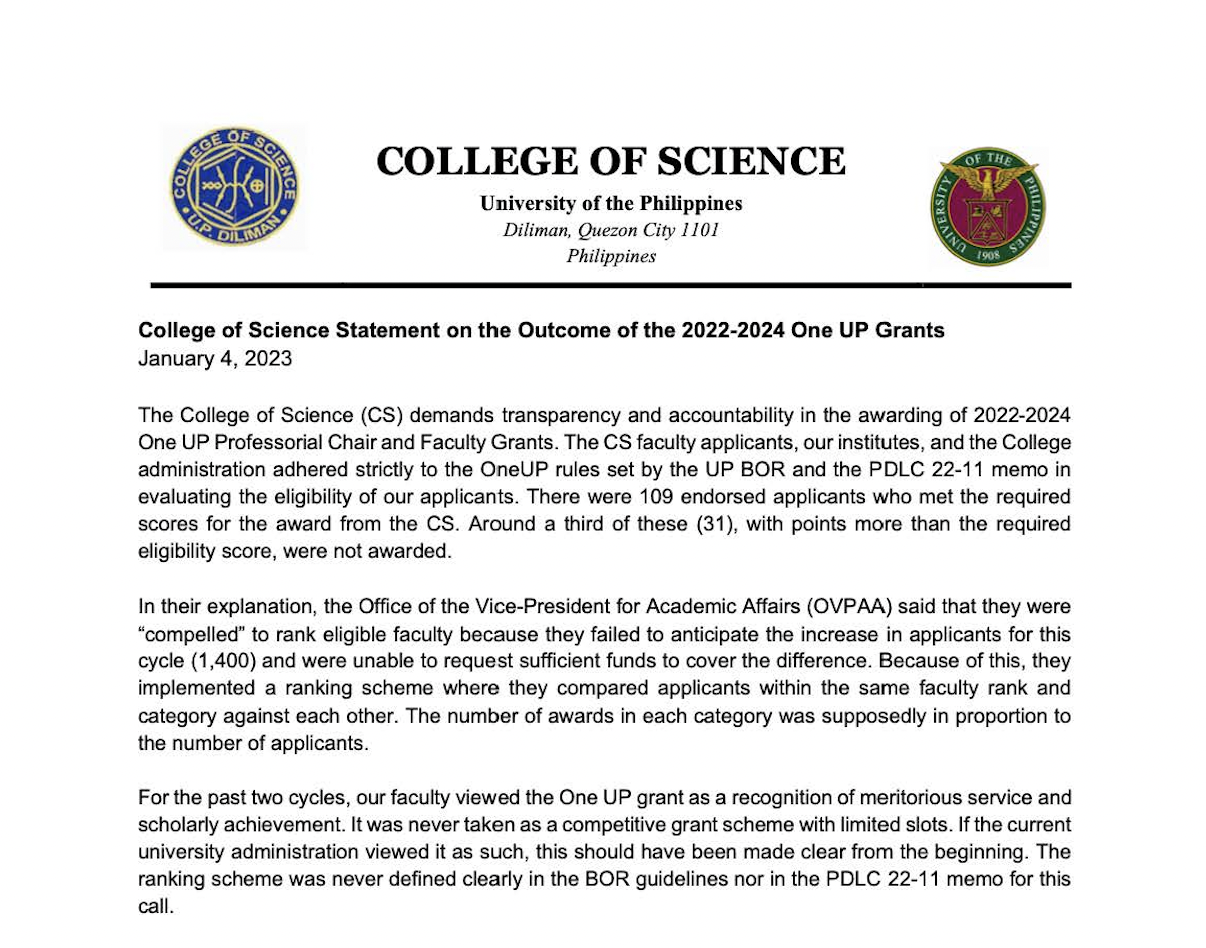
CS CEB statement on the outcome of the One UP
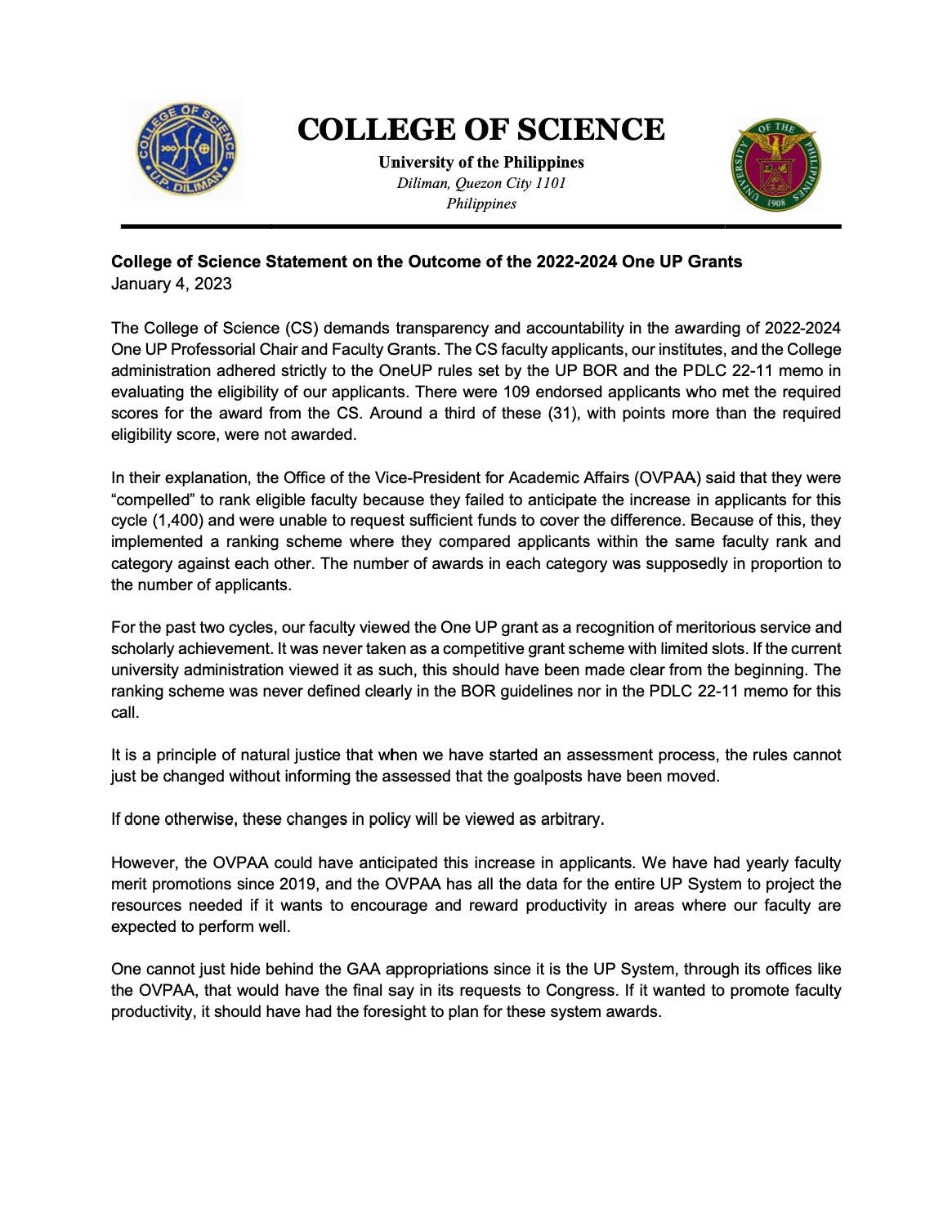
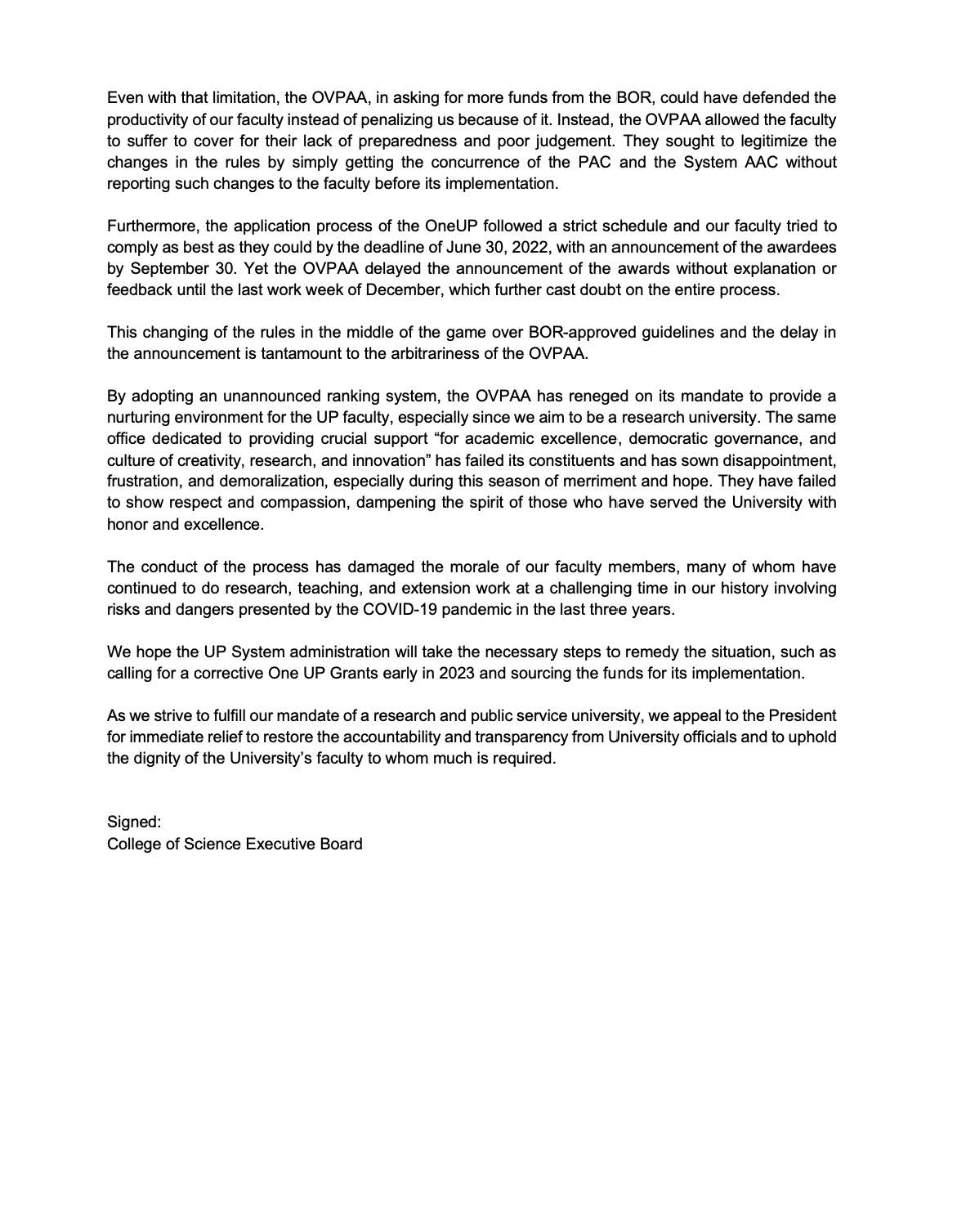
Free Meal


CSLIB Study Nook
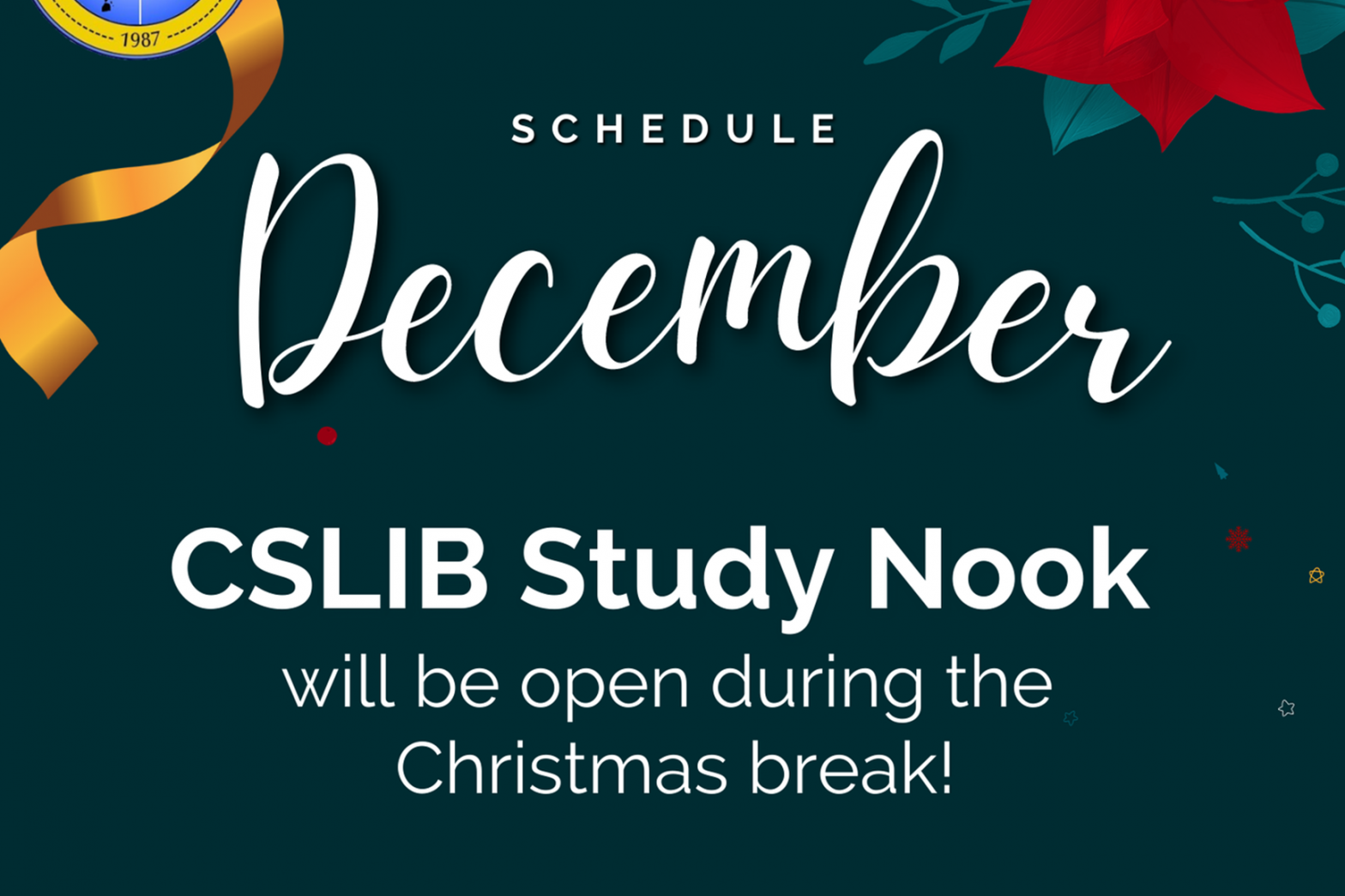
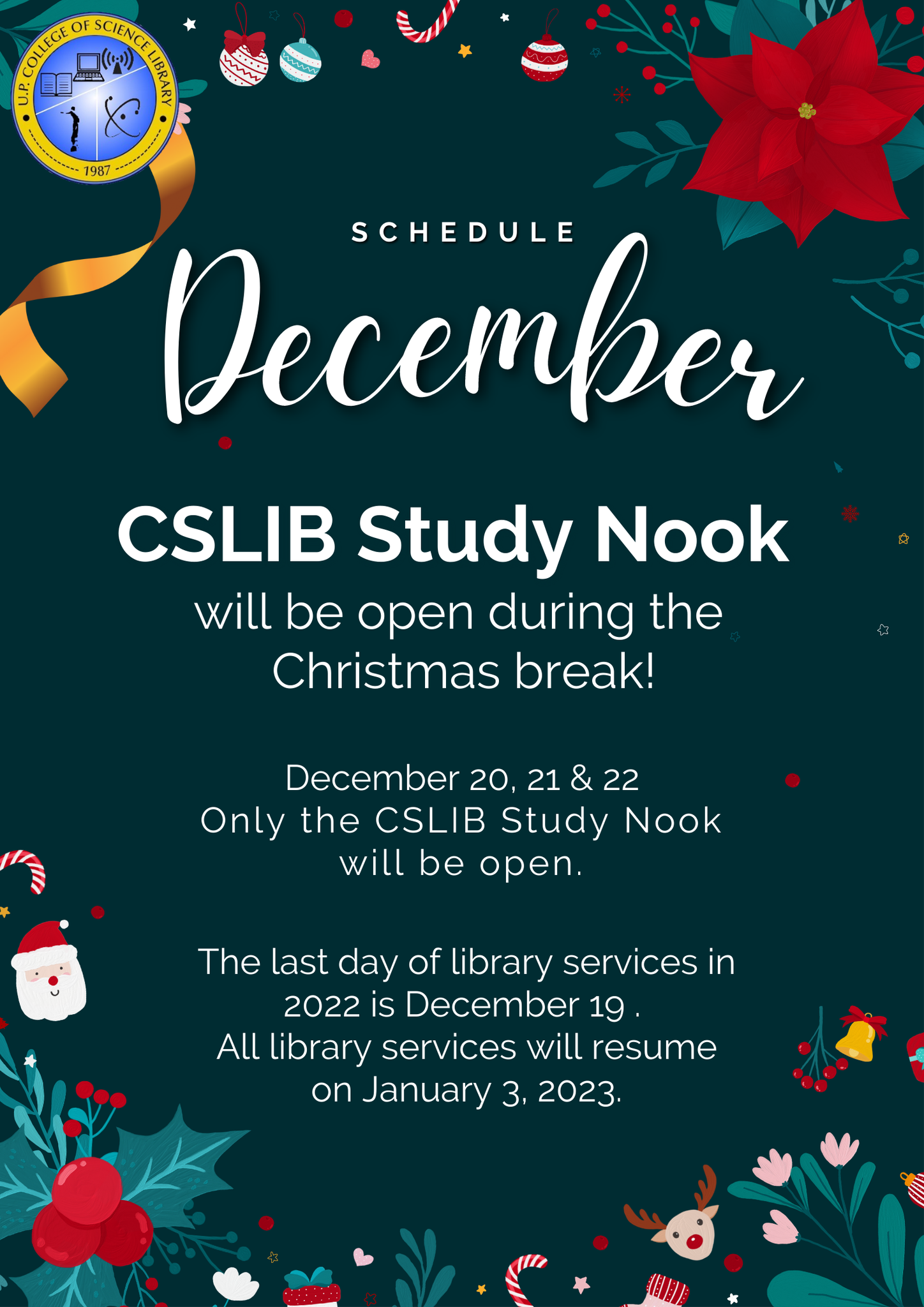
UPD-CS graduates help cement UP’s lead in Asia
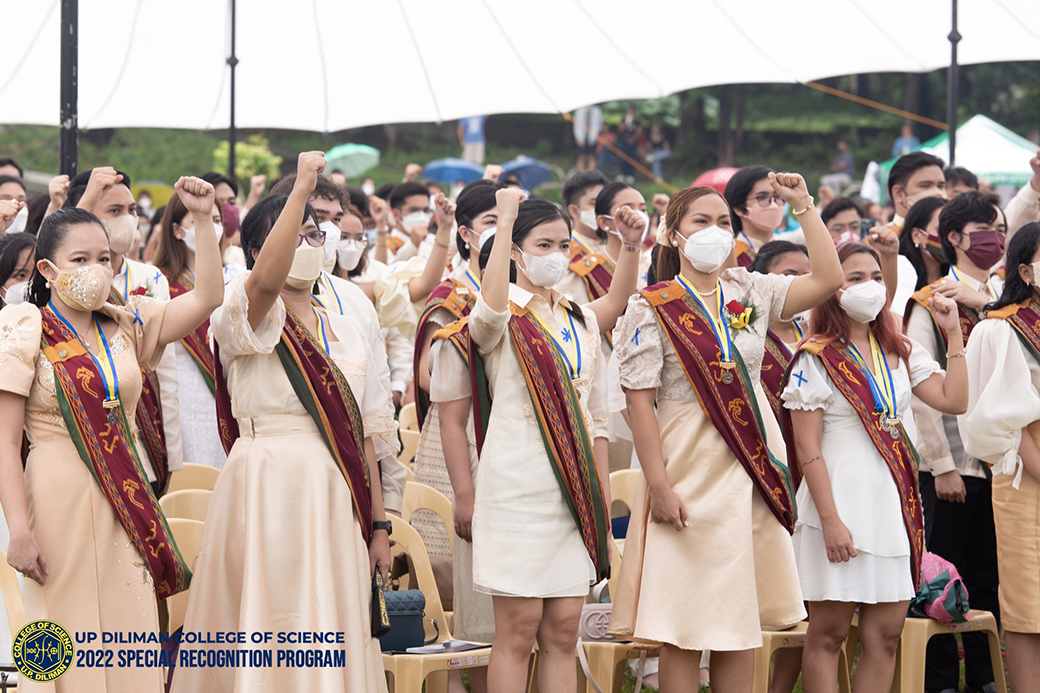
UPD-CS graduates help cement UP’s lead in Asia
Published: November 28, 2022
By: Eunice Jean C. Patron

One out of every ten graduates of the University of the Philippines – Diliman (UPD) is from the College of Science (UPD-CS), underscoring the latter’s essential contributions to the University’s standing as the country’s premier institution of higher learning.
In 2022 alone, UPD-CS accounted for 331 or 9.52% of UPD’s 3,475 graduates. This helped UP as a whole rank 87th in Asia and 18th in Southeast Asia in the recently-released 2023 Quacquerelli Symonds (QS) Asia University Rankings, ahead of other Philippine universities. To help maintain and improve UP’s premiere status, UPD-CS is mandated to produce internationally-recognized graduates, institutional partnerships, and research output.
“The College aims to collaborate with different NGOs, private entities, SUCs, HEI, and local and international institutions in the scientific community to promote and mobilize scientific experts,” explained UPD-CS’s Associate Dean for Research, Innovation, Development, and Enterprise Ricky Nellas. “This will serve as a training ground for UP experts, students, and staff to fill network engagement between researchers.”
UPD-CS also has 18 active international research collaborations, five of which started just this year, plus a further 18 ongoing local partnerships. These were also taken into consideration in UP’s QS score and subsequent ranking.
Moreover, UPD-CS aims to produce industry and government leaders as it transforms itself into a leading research institution in Asia. Apart from strengthening the College’s research projects and partnerships, having a multi-tier support system for researchers would help achieve these goals, according to AD Nellas.
“This system should include not only financial coverage, but also holistic activities for the physical, mental, and psychological well-being of researchers,” he said. “Moreover, CS and the University should partner with lawmakers to improve taxation for researchers and lobby for tax exemptions for the research-derived honoraria and financial incentives. Alternatively, an increase in research honoraria can be implemented in lieu of tax breaks.”
AD Nellas added that the most crucial step UP should take is to improve the procurement process needed to establish, operate, and maintain scientific infrastructure and facilities. Restructuring the procurement pipeline for research activities, simplifying requirements, and providing exceptions for specialized needs would help reorganize the procurement process.
“These would greatly accelerate research and alleviate the administrative workloads of both project staff and the faculty. CS and the University could also allow and lobby for the deregulation of research-related contracts to allow our researchers greater flexibility, make procurement efficient, and improve the working conditions of staff and personnel,” he concluded.
For further information, please contact UPD-CS Associate Dean for Research, Innovation, Development, and Enterprise Ricky Nellas at rbnellas@up.edu.ph.
For interviews and other inquiries, please contact media@science.upd.edu.ph.
CS Library 24/7 Study Nook is now OPEN!
